Every successful business needs a strong brand voice. It's how your company talks to customers and stands out from competitors. A well-crafted brand voice creates emotional connections, builds trust, and shapes customer loyalty.
Your brand voice must align with your company's mission and core values. This alignment helps define your brand's personality and builds a unified strategy. Marketing authority Seth Godin demonstrates that brand personality development requires consistent messaging across all channels.
But what makes a brand voice successful? How do you create one that connects with your target market? This guide explains why having a clear brand voice matters and shows you how to build one that captures attention.
Brand Voice Definition
Brand voice is your brand's personality and character. It's how your company speaks to customers, the language and tone you use, and the values you share. It shows what makes your business unique and gives it an identity customers can connect with.
Creating a strong brand voice takes careful planning. First, you need to understand your target audience. Who are you trying to reach? What do they care about? You should also consider your company's core values so they come through in your communication.
Consider the tone that best suits your business. Should it be professional or casual? Formal or informal? Serious or playful? David Aaker, a leading brand strategy expert, establishes that successful brands choose tones that match their audience's expectations.
Creating Brand Voice
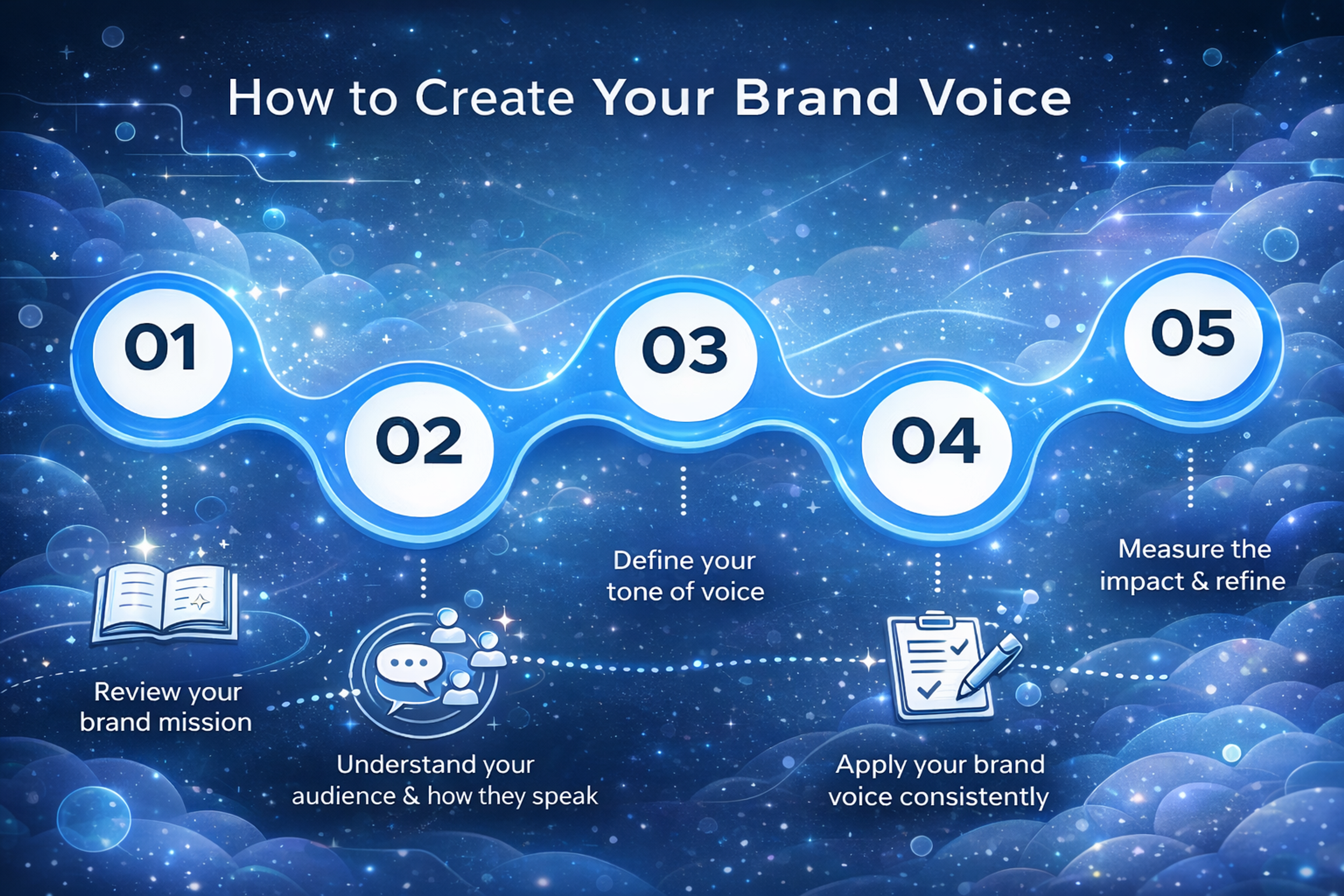
Your brand voice isn't fixed. It grows as customer needs change and your company develops. You should regularly check and adjust it to stay relevant and meaningful to customers.
Why Does Brand's Voice Matter?
Brand voice matters because it creates connections between businesses and their audiences. A strong brand voice builds trust and customer relationships, which leads to increased loyalty. It also helps your business stand out by showing a unique personality.
With your own brand voice, you can build relationships, create community, and boost confidence in your products. You do this by showcasing your values and explaining why you're different.
Apple exemplifies premium brand voice positioning through its consistent, minimalist communication style. Nike demonstrates how motivational and empowering brand voice characteristics drive customer engagement. Coca-Cola reveals the power of emotional connection and global brand consistency.
Creating content that connects with customers helps them identify with your brand voice. This builds emotional connections and feelings of understanding that encourage customers to choose your business over others.
A brand voice also lets you engage with audiences in new ways, like through storytelling or humor. These tactics help capture customer attention, which every successful business needs.
Having a clear brand voice helps customers recognize your company's messages. They're more likely to remember you when they need your product or service. This recognition impacts buying decisions and helps increase sales over time.
Examples of Brand Tone of Voice

Brand Voice vs Tone
Think of brand voice as your brand's personality. It's the consistent way your brand sounds, no matter where or how you communicate. Your voice stays the same whether you're writing a social media post, blog, or customer email. It makes your brand instantly recognizable and creates strong connections with your audience.
Brand tone is how you adjust that voice depending on the situation. Imagine talking to a close friend. You have a natural way of speaking (your voice), but your tone shifts depending on the conversation. If they're celebrating, you're excited and upbeat. If they're struggling, you're more caring and calm. Brands work the same way.
For example, if your brand is generally playful and friendly, your tone might be:
- Upbeat and fun in product launch announcements
- Reassuring and clear in customer support responses
- Sincere and warm when addressing serious issues
Brand Voice vs Brand Tone
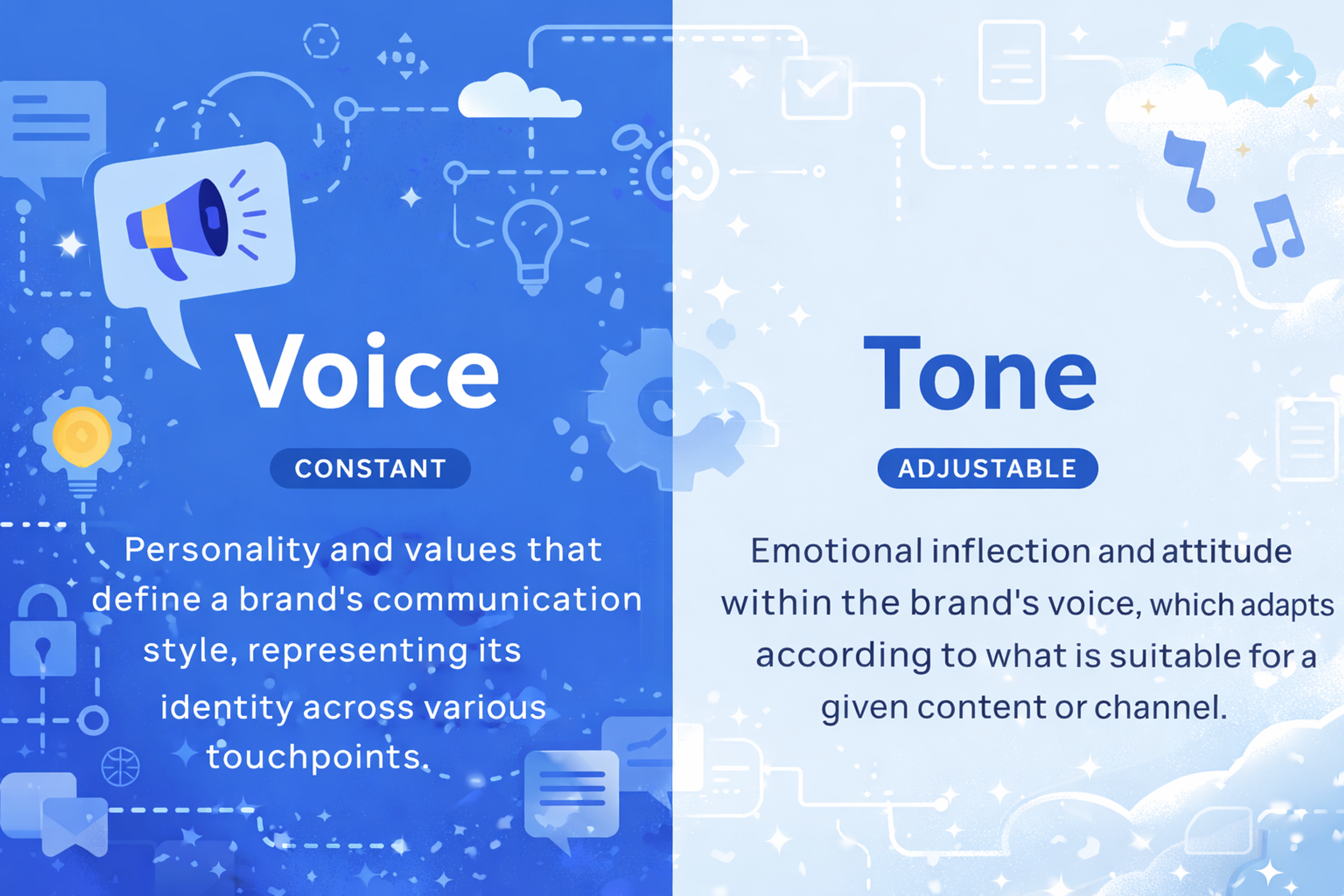
A strong brand knows how to balance consistency (voice) with flexibility (tone). The key is making sure your tone fits the context while staying true to your brand's personality.
What Does It Mean to Have a Good Brand Voice?
A good brand voice isn't just about what you say. It's about how you say it. The personality behind your words shapes how people feel when they interact with your brand.
It Feels Real
A strong brand voice doesn't try to be something it's not. It matches your brand's values, mission, and audience. If your brand is casual and friendly, don't suddenly sound corporate. If you're a luxury brand, don't start using slang. Stay true to who you are.
It's Recognizable
Your brand voice should be so unique that people recognize it even without seeing your logo. Whether it's playful like Duolingo, bold like Liquid Death, or refined like Aesop, the key is making it sound uniquely yours.
It Connects with Your Audience
A good brand voice speaks the language of the people it's trying to reach. It understands their problems, interests, and humor. The best brand voices make people feel like they're talking with a friend, not being sold to.
It's Consistent Across All Channels
Your tone and style should stay the same whether you're writing a tweet, email, or website copy. Mailchimp achieves this balance as an example of playful yet professional B2B brand voice. If your brand voice is friendly on Instagram but stiff in customer service emails, it creates confusion. Consistency builds trust.
A good brand voice makes people feel something. It turns casual visitors into loyal fans and makes your brand more than just another name in a crowded market.
The 3 C's of Brand Voice
Your brand voice is more than just words. It's your brand's personality in writing. It's how people recognize you, connect with you, and remember you. To make sure your voice stands out, keep these 3 C's in mind:
1. Clarity – Say It Like You Mean It
Nobody likes reading something twice just to understand it. A strong brand voice is clear and direct. Whether it's a social post, email, or tagline, your audience should get it instantly. No fluff, no confusion, just clear communication.
2. Consistency – Keep It Familiar
Ever followed a brand that sounds fun and friendly on Instagram but suddenly turns robotic in emails? That's a branding problem. Your tone should feel the same everywhere so people know it's you speaking, no matter where they find you.
3 C`s of Brand Voice

3. Character – Make It You
Your brand should have personality. Are you witty and playful? Sophisticated and expert? Warm and encouraging? Whatever it is, embrace it. The more human your brand sounds, the easier it is for people to connect with you.
A great brand voice isn't just about sounding good. It's about making people feel something. Keep it clear, consistent, and full of personality, and your audience will keep coming back.
How to Develop Your Brand Voice
Creating a strong brand voice requires understanding several key factors. These include your target audience, core values, language and tone for communication, and storytelling abilities. All these elements help build trust and relationships with customers, leading to increased sales over time.
Ann Handley from MarketingProfs demonstrates that effective content marketing relies on consistent brand voice development. Kristina Halvorson from Brain Traffic establishes that content strategy and voice guidelines must work together for success.
Companies like Skittles, Harley-Davidson, and Spotify show how unique and consistent brand voices help connect with audiences and stand out in the market.
Elements of Brand Voice

Research Your Target Audience
Creating a strong brand voice starts with thorough research on your target audience. You need to know who you're trying to reach, their needs, wants, and interests. This helps you create content that connects with them.
You can do this through surveys, interviews, focus groups, or other research methods. You should also analyze existing customer data to understand what types of language they respond to best.
For example, if your target audience is millennials, you need to know their preferred communication methods, like social media platforms or video content. You should also consider what topics interest them, such as technology, sustainability, or social issues. Tailor your messaging accordingly.
Understanding customer habits and preferences helps you create content that speaks directly to them. This captures their attention and encourages them to engage with your business.
Source: Unsplash+
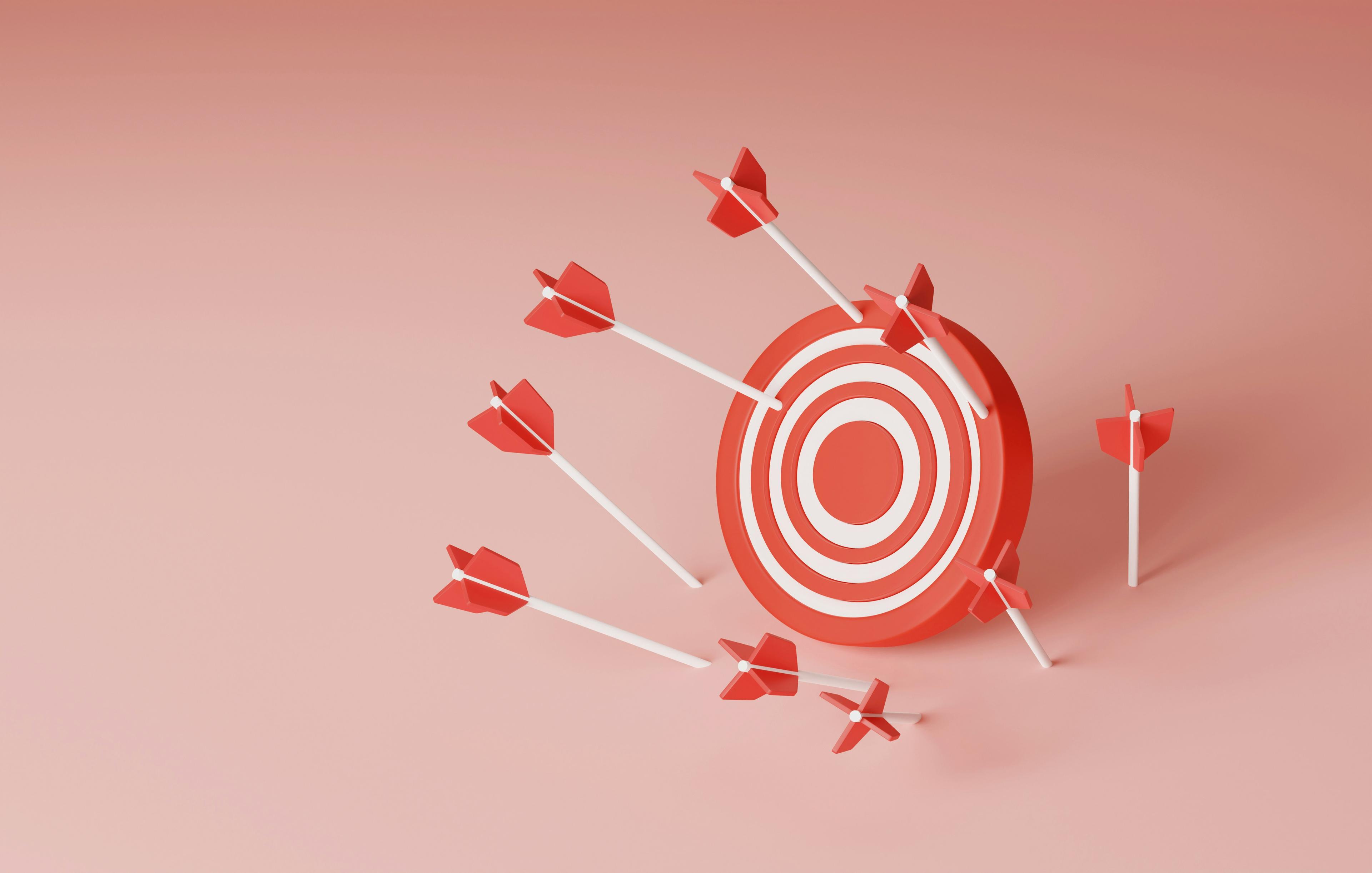
HubSpot exemplifies comprehensive brand voice implementation across CRM systems. Hootsuite demonstrates effective social media brand voice management. Grammarly Business provides tools for brand voice consistency across teams.
Research can also give you valuable insights into the words customers use when discussing products or services like yours. This understanding can inform your messaging tone so it aligns with how customers talk about similar items. Paying attention to these details helps ensure your brand voice connects with customers and creates emotional bonds.
Establish Your Brand's Tone and Style
Once you understand your target audience and their interests, you can create a unique brand voice that stands out. You need to establish a tone and style that aligns with your brand personality and core values while connecting with customers.
When creating your brand voice tone, consider what type of language connects most with customers. For example, if you have a casual target audience, using informal language may appeal more than stiff professional language. Consider which words and phrases your target customers use when discussing products like yours. Using these terms in your messaging makes it feel more authentic.
Patagonia demonstrates a values-driven and authentic communication style through environmental messaging. Canva shows how visual brand voice alignment works across design platforms. WordPress provides content management considerations for maintaining brand voice consistency.
You should also consider the overall communication style in your messaging. Do you want to be conversational or formal? Are there industry-specific terms you could use to show expertise? What topics could you discuss to demonstrate thought leadership? Answering these questions helps ensure your content's tone and style work for your target audience and industry.
Four Dimensions of Tone of Voice

Think about how storytelling might help communicate with customers. Telling stories about your product or service can create emotional connections while providing valuable insights on how to use it effectively. Humor is another great way to capture customer attention. It helps messages stand out from competitors while positioning your brand as fun and approachable.
Establishing tone and style for your brand creates engaging experiences that speak directly to customer needs, interests, and preferences. This makes it easier for them to recognize and remember your messaging while developing emotional connections over time.
Refine and Adjust as Needed
Once you establish tone and style for your brand voice, you need to refine and adjust it as needed. Refining your messaging means ensuring it aligns with business goals, meets customer needs, and connects with customers over time. This process can involve testing different content types or trying different formats until you find what works best.
Adjusting your messaging means paying attention to customer feedback and how people engage with your content. This helps inform which topics to focus on or how to improve existing content to appeal more to customers. Adapting your content helps ensure it stays relevant in a changing market while continuing to capture customer attention and build relationships.
Brand Layers
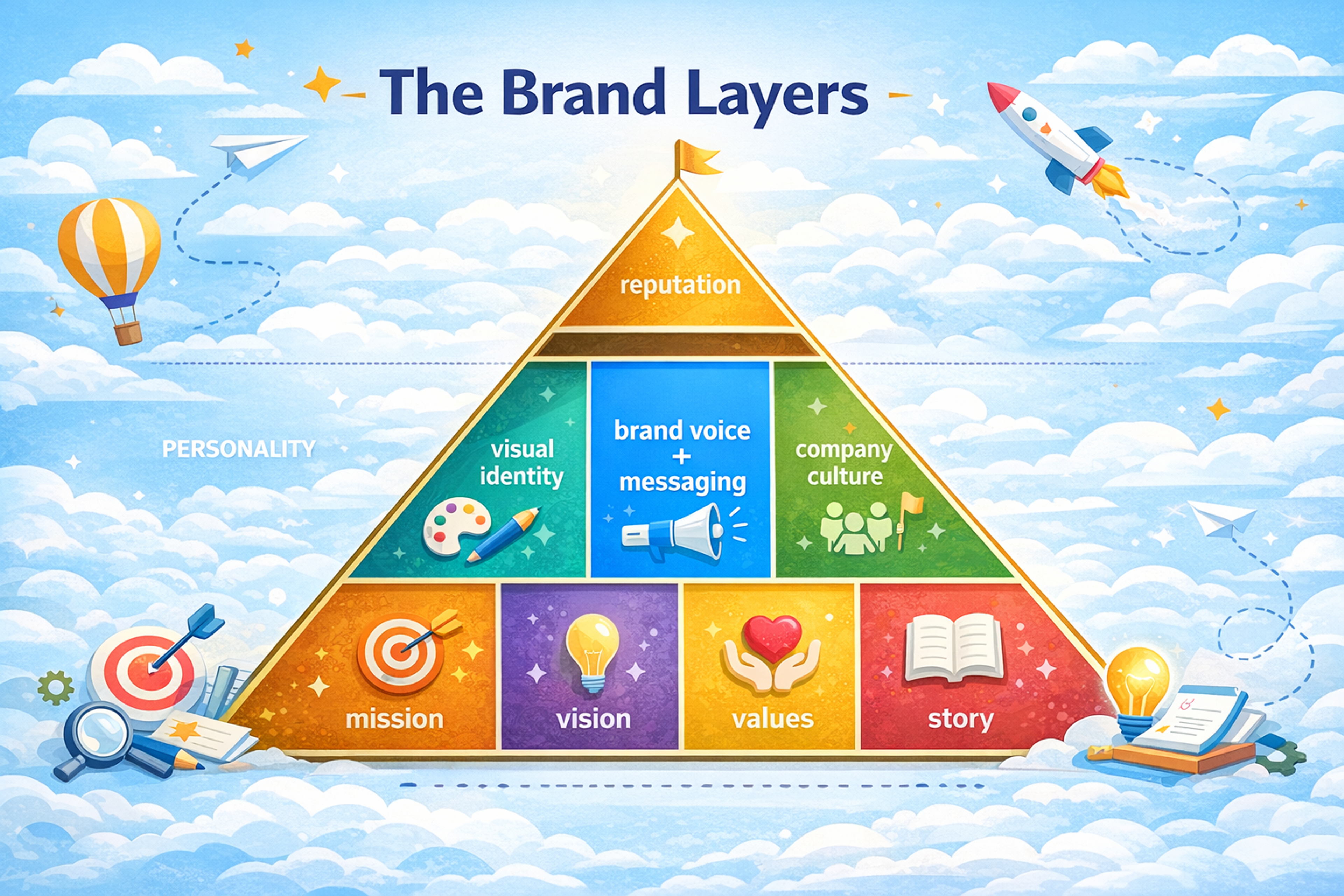
Edelman Trust Barometer data reveals that brand authenticity significantly impacts customer trust. Sprout Social statistics show that brand voice consistency directly affects engagement rates. Stackla research demonstrates consumer preference for authentic brand content over polished marketing messages.
Refining and adjusting your brand voice should be ongoing. It should consider customer feedback and evolve alongside market changes. By doing this, you ensure your messaging stays current and speaks directly to customer needs. This creates emotional bonds between customers and your business.
Tailoring Your Tone to Different Content and Channels
Tailoring your tone to different content and channels is crucial for maintaining consistent brand voice. While your brand voice stays the same, your tone can adapt to different contexts and audiences.
Adapting Your Voice for Various Formats
Different formats, like social media posts, blog articles, and customer service responses, need different tones. For example, a social media post might be more casual and conversational, while a customer service response might be more formal and caring.
When creating social media posts, a light-hearted and engaging tone can capture attention and encourage interaction. Customer service responses should be professional and concerned, addressing customer issues with empathy and clarity.
Content Marketing Institute research shows that brand voice effectiveness increases when companies identify common scenarios and categorize them into different tones. This helps maintain consistency while adapting to specific situations.
Ensuring Consistency Across Platforms
Consistency is key to maintaining strong brand voice. Make sure your tone stays consistent across all platforms, including social media, website, blog posts, emails, and advertisements.
A brand style guide is an essential tool for keeping your social media posts and marketing copy consistent. This guide should list personality traits, common vocabulary, brand phrases, and examples that show the ideal brand voice. Including a list of do's and don'ts with examples can further clarify how to capture your brand's voice accurately.
Contently studies demonstrate that brand voice consistency measurement directly impacts customer recognition. CoSchedule data shows that consistent brand voice significantly improves engagement across all marketing channels.
Consider making your brand style guide public so external contributors can also capture the brand voice. Outline what not to do and what to aim for, making it easier for everyone to create copy that aligns with your brand's voice. This consistency builds trust and strengthens brand recognition across all touchpoints.
Best Practices for Implementing Brand Voice
Implementing a strong brand voice requires careful planning and execution. Here are the best practices to help you get started:
Integrating Voice into Marketing Strategies
Integrate your brand voice into all marketing strategies, including social media, content marketing, and advertising. A compelling brand voice creates emotional connections with customers, making your messaging more impactful.
Use language and vocabulary that connect with your target audience. Develop an authentic and consistent brand personality that reflects your company's mission and core values. Storytelling and creative language can bring your brand voice to life, making it more relatable and memorable.
Accenture studies show a correlation between brand voice and customer loyalty. Salesforce data demonstrates that consistent brand voice implementation significantly impacts customer experience scores.
Consistency is key to developing a strong brand voice, so ensure your messaging stays uniform across all channels.
Brand Voice Guidelines: What to Include
Strong brand voice is like your brand's personality. It shapes how you connect with your audience and makes your messaging feel consistent and authentic. To keep things clear and on-brand across all platforms, here are the key elements your brand voice guidelines should cover:
Define Your Brand's Personality
Think of your brand as a person. Is it friendly and conversational? Bold and expert? Playful and quirky? Your guidelines should clearly outline your brand's personality traits so every piece of content feels like it's coming from the same voice.
Dos and Don'ts: Keep It Clear
Help your team stay on track with examples of the right and wrong ways to express your brand. If your voice is fun and engaging, you might say, "We keep things light and relatable — no corporate jargon allowed." List out things to avoid, like overly formal language or phrases that don't match your brand's personality.
Know Your Audience
Your brand voice should speak directly to the people you're trying to reach. Who are they? What do they care about? What kind of language connects with them? Your guidelines should include audience insights so every piece of content feels personal and relevant.
Writing Style and Formatting: The Details
Even small details play big roles in shaping your tone. Things like whether you use contractions, how formal your punctuation is, or if emojis are appropriate all matter. Make it easy for everyone on your team to stay consistent by setting clear rules around sentence structure, word choice, and formatting.
Adapting to Different Platforms
Your brand voice should be flexible enough to fit different platforms while staying true to its core personality. A social media post might be more casual and playful, while a press release or customer support message may need a more polished and professional tone. Lay out how to adjust the voice depending on where the message is going.
Writing Style and Formatting
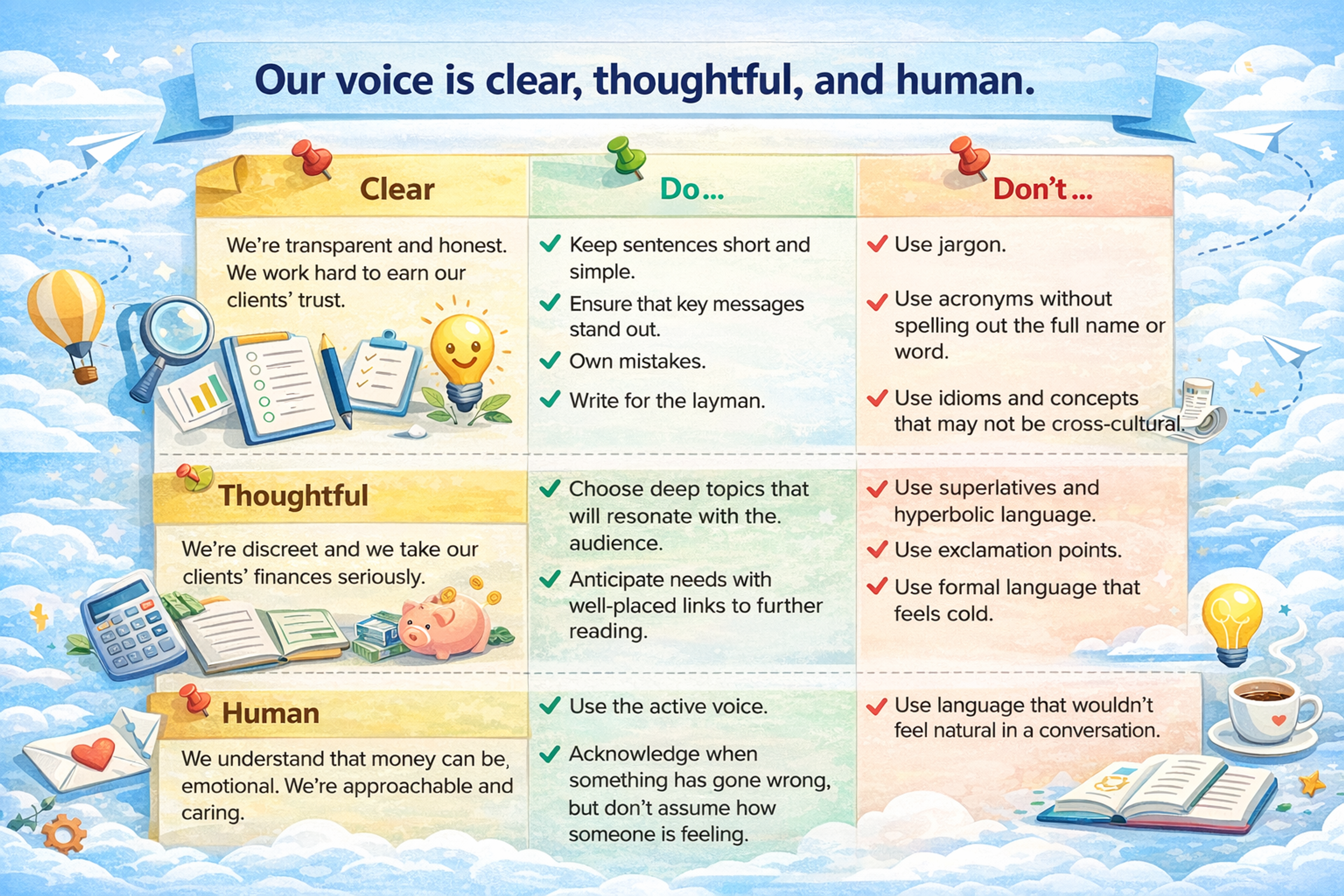
Real-World Examples: Show, Don't Just Tell
The best way to ensure consistency? Give real examples! Include sample headlines, social media captions, email intros, and customer support responses that show your brand voice. This helps your team understand exactly how to bring your brand's personality to life in everyday communication.
Keep It Real and Evolve Over Time
Great brand voice feels natural, not forced. And just like people grow, brands do too. Make sure your guidelines stay flexible and open to adjustments as your brand develops and connects with new audiences.
3 Great Brand Voice Examples
Slack: Clear, Human-Centered, and Friendly
Slack’s brand voice is designed to make workplace communication effortless and engaging. The company prioritizes clarity while maintaining a warm, approachable branding tone of voice that makes collaboration feel natural. Their messaging avoids corporate jargon and leans into conversational, easy-to-understand language, making Slack feel more like a helpful teammate than another tool.
Slack Interactive Demo by Clay
A key aspect of Slack’s brand voice is its ability to balance professionalism with a touch of personality. The brand maintains a reassuring and friendly tone in product announcements, onboarding emails, or error messages. Their use of subtle humor and informal language helps reduce friction in communication, making work feel less like, well, work.
Netflix: Entertaining, Conversational, and Immersive
Netflix’s brand voice reflects its mission — delivering engaging, diverse, and on-demand entertainment to audiences everywhere. The company communicates in a casual, witty, and culturally aware way. Its messaging is always viewer-focused, using conversational language and timely references that make its content feel personal and relevant.
Beyond clarity, Netflix infuses its voice with a sense of immersion. Whether crafting show descriptions, promoting upcoming releases, or sparking conversations on social media, Netflix’s tone draws audiences into the experience. This engaging style makes the brand feel like a savvy friend with great recommendations, reinforcing its identity as a platform that understands what people love to watch — and why.
Duolingo: Playful, Engaging, and Witty
Duolingo stands out with a brand voice that is fun, lighthearted, and sometimes even cheeky. Their messaging is designed to make language learning feel less intimidating and more like a game. Whether it’s their quirky push notifications, humorous social media presence, or the legendary “Duo” owl gently (or aggressively) reminding users to practice, the brand keeps engagement levels high with personality-driven communication.
Duolingo Example

Duolingo’s brand voice effectively motivates users while maintaining a sense of fun. They use gamification elements in their app and messaging, reinforcing the idea that learning should be enjoyable. Their branding tone of voice is casual, energetic, and full of personality, helping them build a strong emotional connection with their audience.
Read more
FAQ
What Is Brand Voice vs Messaging?
Brand voice is the consistent personality and style you use in all communication — the tone, language, and character that make your brand recognizable. Messaging is the actual content of what you say — the key points, value propositions, and stories you share. Voice is how you speak; messaging is what you say.
What Is an Example of a Friendly Brand Voice?
A friendly brand voice uses warm, casual language that feels personal and approachable. For example, Slack’s tone is upbeat, helpful, and conversational, making complex tools feel easy and inviting for everyday users.
How Do I Find My Authentic Voice?
Identify your core values, understand your audience, and define how you want them to feel when they interact with your brand. Then, choose a tone and style that naturally reflects your company’s personality and use it consistently across all channels.
What Are the 5 Main Brand Personalities?
The five main brand personality types, based on Jennifer Aaker’s framework, are:
1.
Sincerity – Honest, friendly, and genuine2.
Excitement – Energetic, playful, and daring3.
Competence – Reliable, professional, and skilled4.
Sophistication – Elegant, refined, and charming5.
Ruggedness – Tough, strong, and outdoorsy
Conclusion
A unique and distinctive brand voice is essential to any successful marketing strategy. By considering the language and communication style that resonates with customers, incorporating industry-specific terms for expertise, leveraging storytelling to create emotional connections, and using humor to capture attention, you can ensure your messaging stands out from competitors.
Additionally, refining and adjusting as needed based on customer feedback will help keep your content up-to-date while ensuring it speaks directly to their needs — leading to increased sales in the long run. With these tips in mind, you’re now armed with all the tools necessary to craft an engaging brand voice that drives results!


About Clay
Clay is a UI/UX design & branding agency in San Francisco. We team up with startups and leading brands to create transformative digital experience. Clients: Facebook, Slack, Google, Amazon, Credit Karma, Zenefits, etc.
Learn more

About Clay
Clay is a UI/UX design & branding agency in San Francisco. We team up with startups and leading brands to create transformative digital experience. Clients: Facebook, Slack, Google, Amazon, Credit Karma, Zenefits, etc.
Learn more


